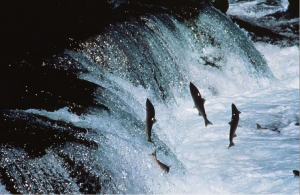Quantum Tunnnelling in Olfaction
The sense of smell of animals, including ourselves, is remarkable. A bear can smell a carcass 20 kilometres away. A moth can detect a mate from six to seven miles away; rats smell in stereo and snakes smell with their tongues. Many other animals use their sense of smell to migrate. For example, every year, along ocean coasts around the world, millions of salmon assemble into large schools at the mouths of rivers before venturing inland to battle against the flow of current, rapids, waterfalls and sand banks to follow a scent that takes them back to their spawning ground.

All of these olfactory skills are essential for animals that must find food, mates or avoid predators; so they utilise volatile cues that betray the proximity of these resources or dangers, whether in air or water. But how does this extraordinary sense work?
The conventional theory of olfaction is that odour molecules are detected by odour receptors via a kind of lock (the odour receptor) and key (the smelly molecule) mechanism inside our nose. However the theory fails to account adequately for certain observations, such as that very similarly shaped molecules often smell very differently; and vice versa. An alternative theory has molecular vibrations rather than shape providing the lock and key. This received a quantum twist in 1996 when biophysicist Luca Turin proposed that vibrations promote quantum tunnelling of electrons to open the olfactory lock. Turin proposed that when odour molecules are captured by olfactory receptors their bonds vibrations promote a quantum tunnelling event in the receptor molecule that, eventually, sends a signal to the brain.
The theory received a boost when it was recently found that fruit flies can distinguish odorants with exactly the same shape but made of different isotopes of the same elements, something that is hard to explain without quantum mechanics.
